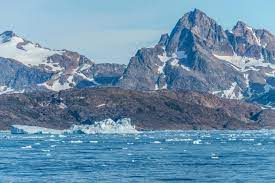Cryosphere Loss:

At COP27, a broad coalition of 18 governments joined together to create a new high-level group ‘Ambition on Melting Ice (AMI) on Sea-level Rise and Mountain Water Resources’.
- The “AMI” group aims to ensure impacts of cryosphere loss is understood by political leaders and the public, and not only within mountain and polar regions, but throughout the planet.
- The founding governments of the group include Chile (co-chair), Iceland (co-chair), Peru, Czech Republic, Nepal, Finland, Senegal, Kyrgyz Republic, Samoa, Georgia, Switzerland, New Zealand, Monaco, Vanuatu, Sweden, Tanzania, Liberia, Norway and Mexico.
Declaration of the Group:
- Climate change has already caused dramatic changes in the global cryosphere, Earth’s snow and ice regions.
- Lives and livelihoods are threatened by, and some already lost from, these changes. Indigenous peoples in both the Arctic and mountain regions have been among the earliest affected.
- The IPCC Sixth Assessment Cycle reports, including the Special Report on Ocean and Cryosphere in a Changing Climate, conclude that such changes in the cryosphere will worsen with each additional increment of global warming and greenhouse gas emissions in the atmosphere.
- The consequences will occur both within and far beyond those in polar and mountain regions.
- In polar fisheries, in addition to warming these include rapid acidification of polar oceans, which scientists say will reach a critical threshold at 450ppm – a level we are on track to reach in just 12 years.
Cryosphere:
- The cryosphere is the part of the Earth’s climate system that includes solid precipitation, snow, sea ice, lake and river ice, icebergs, glaciers and ice caps, ice sheets, ice shelves, permafrost, and seasonally frozen ground.
- The term “cryosphere” traces its origins to the Greek word ‘kryos’ for frost or ice cold.
- The cryosphere extends globally, existing seasonally or perennially at most latitudes, not just in the Arctic, Antarctic, and mountain regions, and in approximately one hundred countries.
- The largest continental ice sheets are found in Antarctica.
- Approximately 70% of the Earth’s freshwater exists as snow or ice.




